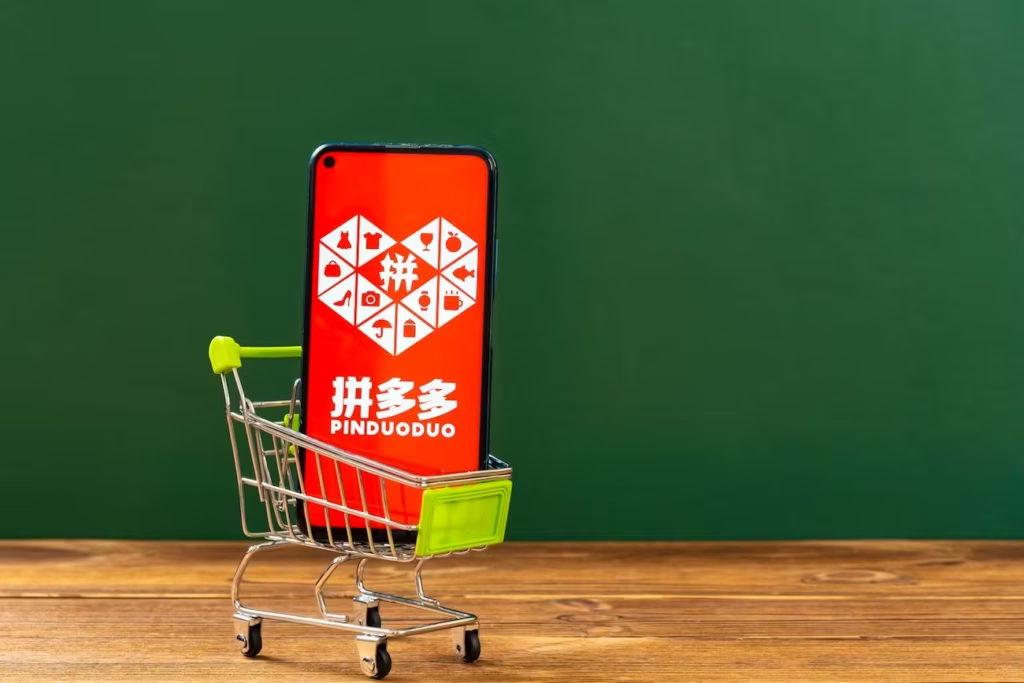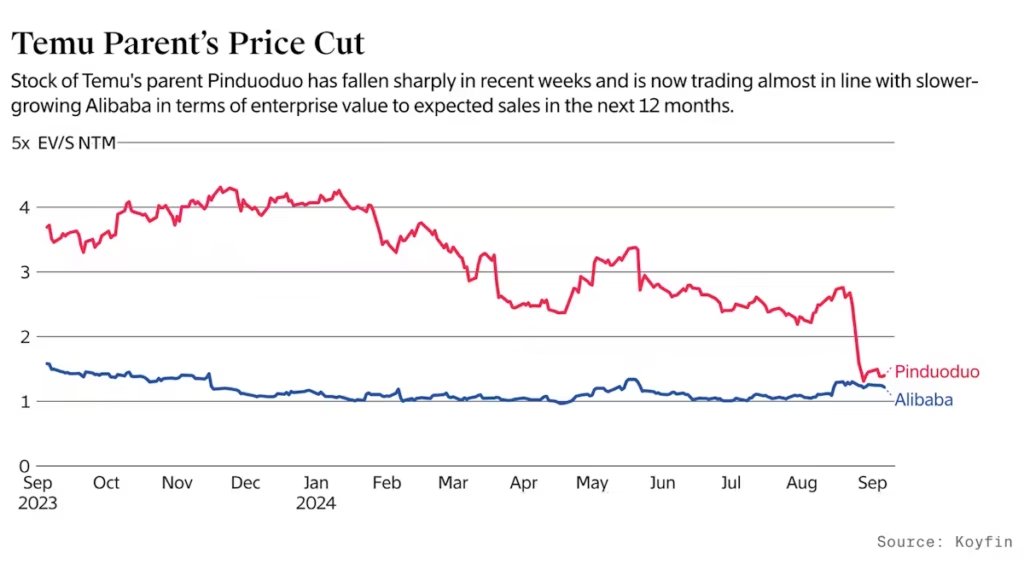What if Trump’s tariffs on China aren’t just about trade?
At first glance, they might seem like just another round of economic saber-rattling. But beneath the surface, there’s a deeper, more calculated strategy at play. Behind the bold headlines about high tariffs and trade wars lies a hidden agenda—one that’s not just about taxing Chinese goods, but about disrupting the very business models of companies like Temu, Pinduoduo, and Shein. This isn’t just a trade fight. It’s a strategic move that could reshape the global e-commerce landscape. Then, Let’s break down what’s really happening.
1. A former Google employee from China sold his stock options after resigning and started an online retail company in China.
2. That person was Colin Huang, and the company he founded is Pinduoduo.

3. Pinduoduo targeted customers living in China’s “beyond the 5th Ring” areas.
4. Beijing has several ring roads, with lower numbers indicating roads closer to the city center.
5. The “5th Ring(北京五环路)” refers to Beijing’s outermost ring road, and “beyond the 5th Ring” means people living outside of it.

6. This area refers to low-income residents living more than 10 km from downtown, where transportation is inconvenient.
7. Colin Huang’s key strategy for these low-income consumers was ultra-low prices.
8. Observing that Alibaba targeted the middle class and above, he identified a gap among low-income groups and aggressively pursued them with rock-bottom prices.

9. Platforms like Amazon earn a significant portion of their revenue by charging sellers referral fees, which typically average around 15% of the sale price.
10. Pinduoduo doesn’t charge any sales commissions.
11. Instead, it only takes 0.6% of the sales to cover payment processing fees with services like Alipay, without profiting directly from sales.

12. This no-commission model allowed Pinduoduo to maintain a strong price advantage.
13. The reason Pinduoduo doesn’t charge commissions is that Colin Huang doesn’t view it as a product sales business.
14. He considers Pinduoduo to be an information-selling business.
15. China has relatively lax regulations regarding personal credit information.
16. Pinduoduo makes money by selling customer data collected during transactions to insurance companies and other interested parties, as well as through advertising.
17. However, this data-driven business model isn’t suitable for overseas markets, where privacy regulations are much stricter.
18. To expand internationally, Pinduoduo introduced a new business model.
19. That’s Temu (short for “Team Up, Price Down”), designed for global markets.

20. Temu is Pinduoduo’s overseas subsidiary, based on a full consignment (C2M) business model.
21. Suppliers working with Temu just need to send their products to Temu’s warehouses—their job ends there.
22. Temu handles everything after production: pricing, marketing, logistics, and customer service.
23. Chinese small businesses found it hard to sell abroad due to language barriers and complex logistics.
24. Temu’s full-consignment model is seen as a game-changer for these companies.

25. With Temu managing most of the business operations, small suppliers can focus solely on production and product development.
26. Temu fosters intense competition among its suppliers every week.
27. Even existing suppliers must submit competitive bids weekly, just like new entrants.
28. The only advantage for existing suppliers is the chance to underbid competitors after seeing their prices.
29. If suppliers can’t beat lower bids, they’re immediately dropped from the platform—a relentless cycle.
30. Once products are listed on Temu, they typically sell in massive volumes.
31. However, if a supplier expands production to meet high demand but loses access to Temu’s marketplace, their revenue can vanish overnight.
32. This creates a system where suppliers are forced to continuously offer the lowest possible prices.
33. Temu uses this strategy to secure ultra-cheap products, then sets its own prices within the lowest price range.
34. Unlike Walmart (or Target, Costco), Temu doesn’t buy products outright. Suppliers must take back unsold inventory, which puts them at a disadvantage.
35. To maintain rock-bottom prices, Temu limits profit margins on products but aggressively offers free shipping.
36. For orders over approximately $10, Temu provides free international shipping.
37. This business model almost guarantees financial losses.
38. Temu spends around $1.7 billion annually on advertising in the U.S., including costly Super Bowl commercials.

39. As expected, the losses are massive—J.P. Morgan estimates Temu lost $3 billion in 2023 alone.
40. Grizzly Research has taken a short position against Temu, claiming it operates like spyware.
41. Critics argue that, like Pinduoduo, Temu might resort to selling personal data to stay afloat since its current model isn’t profitable.
41. Grizzly Research alleges that Temu’s app contains hidden malware and spyware.
42. Security experts analyzing the app claim it uses features that pose significant risks to personal data.
43. Temu’s app reportedly accesses nearly all data on users’ phones, with hidden functions allowing for data leaks.

44. Grizzly Research suspects Temu illegally exploits user data to sustain its failing business model.
45. They estimate Temu loses about $30 per order, with no clear path to profitability.
46. Since Grizzly’s report comes from a short-seller, it’s important to view their claims critically.

47. However, Pinduoduo was previously banned from the Google Play Store after malware was discovered in its app, lending some credibility to these concerns.
48. According to CNN, Pinduoduo accessed users’ call logs, text messages, and photo albums without consent.
49. Once installed, Pinduoduo’s app made it difficult to remove malware even if the app itself was deleted.
50. CNN reported that Pinduoduo embedded malicious code to track user behavior and boost sales.
51. While it didn’t sell this data outright, the company used it for targeted advertising.
52. The real issue is whether this data was used solely for marketing or for other purposes.
53. There’s no concrete evidence that Pinduoduo’s stolen data was handed over to the Chinese government, but Chinese authorities can access any tech company’s data at will.
54. CNN reported that after these allegations surfaced, Pinduoduo rushed to release an emergency update to remove the malware.
55. U.S. lawmakers have started addressing the security risks tied to Pinduoduo’s malware issues.

56. Trump’s new tariffs quietly include indirect regulations targeting Chinese e-commerce platforms like Temu, AliExpress, and Shein.
57. While it seems like the U.S. is imposing broad tariffs on China, they’re mostly focused on specific goods.

58. High tariffs target products like EVs (100%), solar cells/modules (50%), lithium batteries (25%), steel, and aluminum (25%).
59. Meanwhile, items like clothing, footwear, furniture, toys, smartphones, and laptops face lower tariffs—around 7.5%–10%.
60. Raising EV tariffs from 100% to 110% doesn’t change much, but increasing tariffs from 7.5% to 17.5% has a major impact.
61. Another critical point is the De Minimis rule.
62. Under U.S. law, personal imports under $800 are exempt from customs duties.
63. This exemption allowed Temu, AliExpress, and others to ship cheap goods to the U.S. without tariffs.
64. Trump’s new tariff policy eliminates these exemptions.
65. This means most small direct-to-consumer imports from China will now face double taxation.
66. Combining the original 7.5%–10% tariff with an additional 10% brings the total to 17.5%–20%.
67. And it’s not just about tariffs.
68. U.S. Customs will tighten inspections on packages from Temu, Shein, and other Chinese retailers, focusing on hazardous materials and IP violations.
69. This will cause shipping delays and disrupt delivery schedules.
70. Delaying customs clearance is a tactic China often uses against other neighbour asian countries.
71. Ironically, China might now face its own delay tactics from the U.S.
72. Temu and others have tried to bypass these issues by routing shipments through Mexico.
73. However, depending on U.S.-Mexico trade negotiations, these workarounds might soon be blocked.
Taiwan’s Energy Crunch: AI Boom, TSMC’s Power Hunger, and the Nuclear Dilemma (feat. China, Samsung, Intel, Energy, Semiconductors, Blackouts, Taiwan Elections, Politics and Election)
Secret behind 2025 trump-putin call : Did He Just Crush China’s Belt and Road with the Zangezur Corridor? (feat. Azerbaijan, Armenia, Global Trade, Russia, Israel, turkey, iran and energy)
Trump vs. Intel: The Hidden Truth Behind His Call for the CEO’s Resignation—What’s the Real Story? (feat. Lip-Bu Tan, China, Politics, Singapore, Chinese, Malaysia, Asia)
Truth Behind Trump’s Taiwan 20% Tariff: TSMC, Energy Crisis, and the Future of Global Tech (feat. Apple, Intel, China, Semiconductor War, and aI)
Trump’s 50% Tariff on Brazil: The Hidden Power Play Behind BRICS’ Rise (feat. Lula, Putin & the Yuan Challenge)
Rare Earths, Real Stakes: Why Future Depends on Magnets (feat. Dysprosium, China, EVs & Deep Sea Mining)
Alphazen insights

Trump’s approach may come off as aggressive, but his team’s strategy is calculated and precise. The 10% additional tariffs on China could have a far greater impact than anticipated, targeting not just trade but the structure of global supply chains. Although the tariffs on Mexico and Canada seem unrelated, they could be part of a broader plan to renegotiate the USMCA. Trump has already postponed these tariffs for a month to allow room for negotiations. It’s worth watching closely to see if USMCA amendments are brought to the table. Ultimately, though, the core focus remains on China—and this is only the beginning.
Discover more from Alphazen Dynamics
Subscribe to get the latest posts sent to your email.









